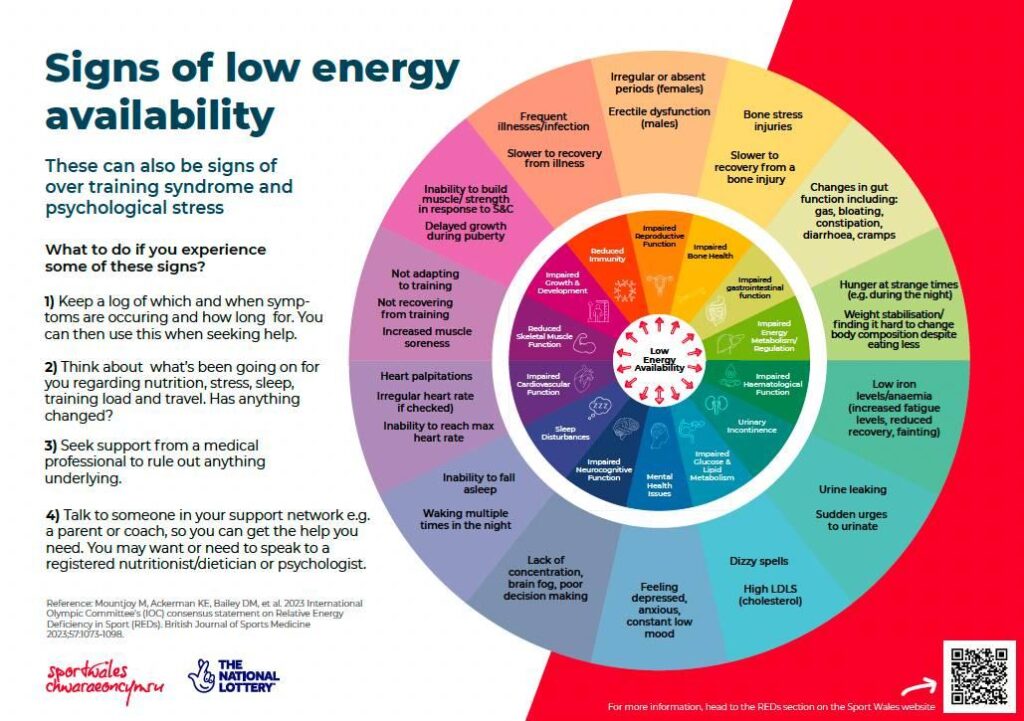Phoenix Children’s Hospital is shining a spotlight on a critical but often overlooked issue in women’s sports: low energy availability (LEA). This condition, characterized by insufficient calorie intake to meet the demands of both exercise and basic bodily functions, can have serious consequences for female athletes’ health and performance. As participation in competitive sports among young women continues to rise, medical experts at Phoenix Children’s Hospital are emphasizing the importance of early identification and intervention to prevent long-term complications such as hormonal imbalances, decreased bone density, and impaired athletic development. This article explores the hospital’s approach to recognizing LEA and supporting female athletes in achieving both peak health and peak performance.
Understanding the Signs of Low Energy Availability in Female Athletes
Female athletes experiencing low energy availability often present with subtle yet concerning symptoms that can impact both their performance and overall health. Key indicators include unexplained fatigue, persistent muscle weakness, and frequent injuries or illnesses. Coaches and healthcare providers should also be alert to disruptions in menstrual cycles, such as irregular periods or amenorrhea, which signal hormonal imbalances linked to insufficient energy intake. Additionally, signs like mood swings, irritability, and difficulty concentrating are common psychological manifestations associated with this condition.
To assist in early recognition, here are some common symptoms and warning signs frequently observed:
- Chronic tiredness even after rest
- Loss of menstrual periods or irregularities
- Decreased training performance and stamina
- Frequent stress fractures or bone pain
- Noticeable weight fluctuations beyond training norms
- Heightened anxiety or depressive feelings
| Symptom | Possible Cause | Impact |
|---|---|---|
| Menstrual irregularities | Hormonal imbalance due to low calories | Reduced bone density risk |
| Fatigue & weakness | Insufficient energy for recovery | Decreased athletic performance |
| Stress fractures | Calcium and vitamin D depletion | Extended time away from sport |
The Impact of Low Energy Availability on Young Athletes’ Health and Performance
Young female athletes experiencing low energy availability face significant risks that extend beyond immediate performance setbacks. When the body’s energy intake fails to meet the demands of training and daily function, it triggers a cascade of physiological disruptions. These can include menstrual irregularities, decreased bone mineral density, and compromised immune function-factors that jeopardize both health and long-term athletic development. Coaches and parents often overlook subtle signs such as chronic fatigue, frequent injuries, or mood changes, which can indicate an underlying energy deficit.
Addressing this issue requires a comprehensive approach, integrating nutritional strategies with medical monitoring. The table below highlights critical indicators frequently observed in affected athletes, enabling quicker identification and intervention:
| Symptom | Possible Consequence | Recommended Action |
|---|---|---|
| Irregular or absent menstrual cycles | Hormonal imbalances, fertility concerns | Consult endocrinologist, dietary assessment |
| Frequent stress fractures | Decreased bone density | Bone density scan, tailored training plan |
| Persistent fatigue | Reduced performance, immune suppression | Rest periods, nutrition optimization |
- Early detection is crucial for reversing the impact on health and sport performance.
- Educational programs targeting energy needs can empower athletes to make informed choices.
- Collaboration between healthcare providers, trainers, and families creates a support network vital for recovery.
Expert Guidance from Phoenix Children’s Hospital on Early Detection
Phoenix Children’s Hospital emphasizes the critical importance of early identification when addressing low energy availability (LEA) in female athletes. LEA, often a silent condition, can negatively impact performance, bone health, and hormonal balance if left undetected. Their specialists highlight key symptoms to watch for, including chronic fatigue, irregular menstrual cycles, and unexplained decreases in training capacity, which often precede more severe complications.
To aid coaches, parents, and healthcare providers in recognizing these warning signs, Phoenix Children’s offers a straightforward checklist coupled with clinical screening protocols designed for youth athletes. Awareness and prompt intervention can curb the progression of LEA and promote healthier athletic development.
- Persistent low energy levels despite adequate rest
- Menstrual irregularities such as missed periods
- Frequent injuries or stress fractures
- Mood changes like irritability or depression
- Unexpected weight loss or difficulty maintaining weight
| Symptom | Potential Impact | Recommended Action |
|---|---|---|
| Fatigue | Decreased performance | Assess nutrition and rest |
| Irregular periods | Hormonal imbalance | Consult endocrinology |
| Stress fractures | Bone weakening | Schedule bone density test |
Practical Steps to Support Athletes Facing Energy Deficits
Addressing energy deficits in female athletes requires a multidisciplinary approach that prioritizes both physical health and performance. Start by conducting thorough nutritional assessments with a registered dietitian to tailor meal plans that ensure sufficient caloric intake aligning with training demands. Equally critical is incorporating regular monitoring of body composition, menstrual function, and psychological wellbeing to identify early signs of energy deficiency and prevent long-term complications.
Key strategies include:
- Adjusting training loads to balance energy expenditure with intake
- Encouraging open communication between athletes, coaches, and healthcare providers
- Implementing educational programs on nutrition and body image to empower athletes
- Introducing targeted supplementation when dietary gaps cannot be met
| Support Aspect | Example Intervention |
|---|---|
| Nutrition | Customized meal planning |
| Training | Reduced intensity periods |
| Medical | Regular hormone screenings |
| Psychological | Access to counseling services |
Final Thoughts
As awareness of low energy availability grows, the importance of early identification and intervention in female athletes becomes increasingly clear. Phoenix Children’s Hospital continues to lead efforts in education and research, aiming to safeguard the health and performance of young athletes. Recognizing the signs and seeking timely medical support remain critical steps toward preventing long-term complications. With ongoing collaboration between healthcare providers, coaches, and families, the path to healthier athletic participation is becoming more accessible than ever.





